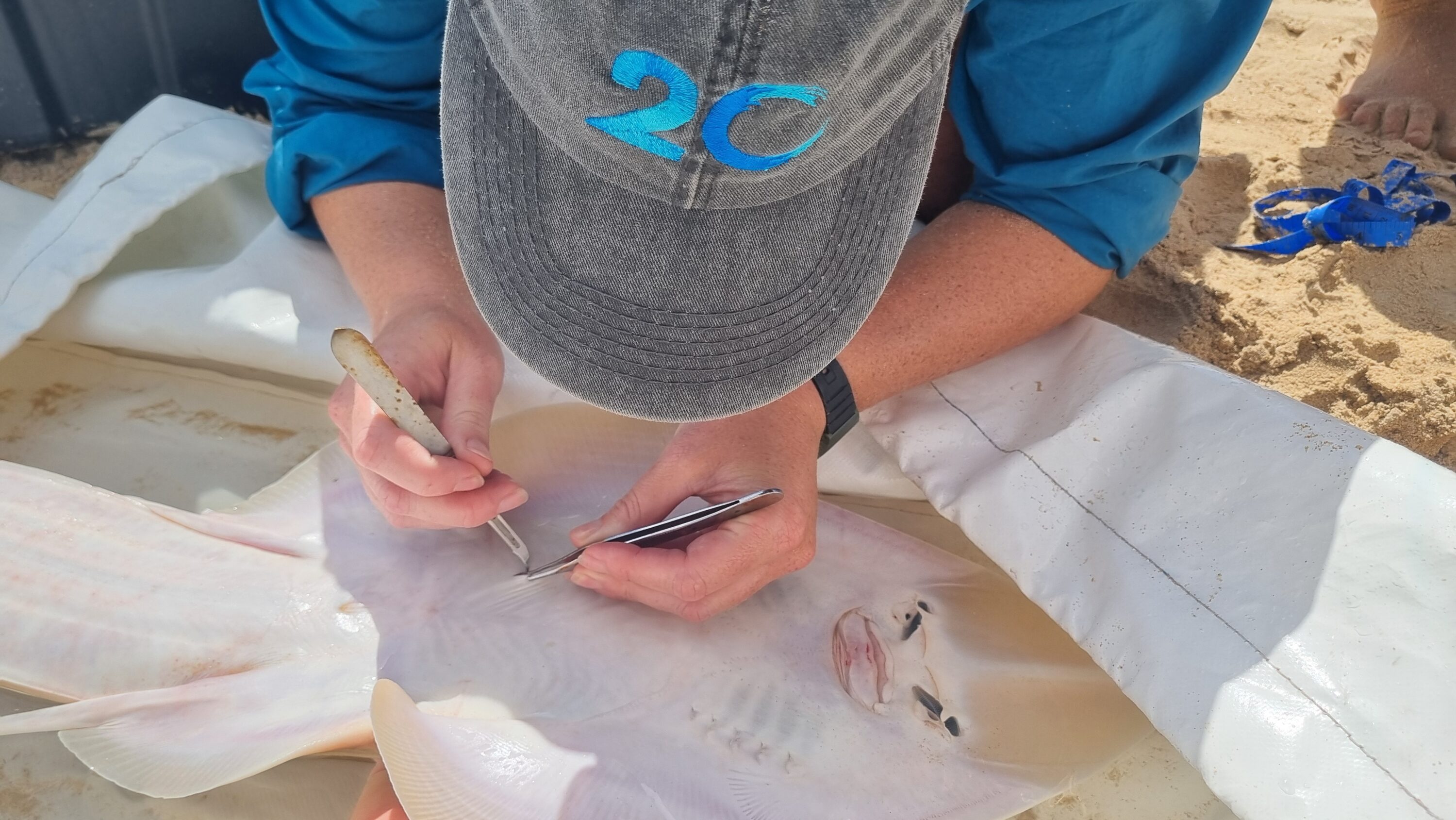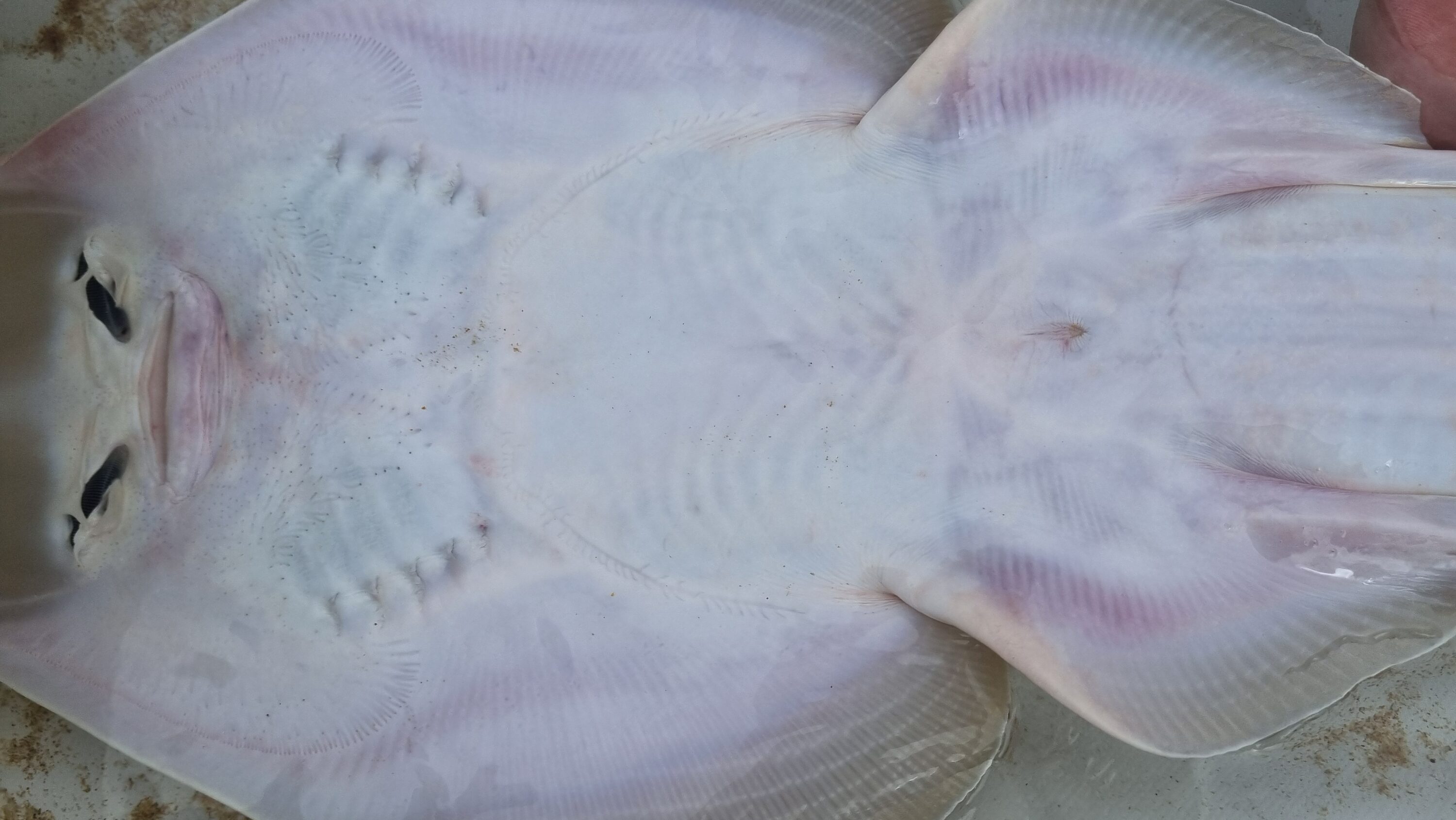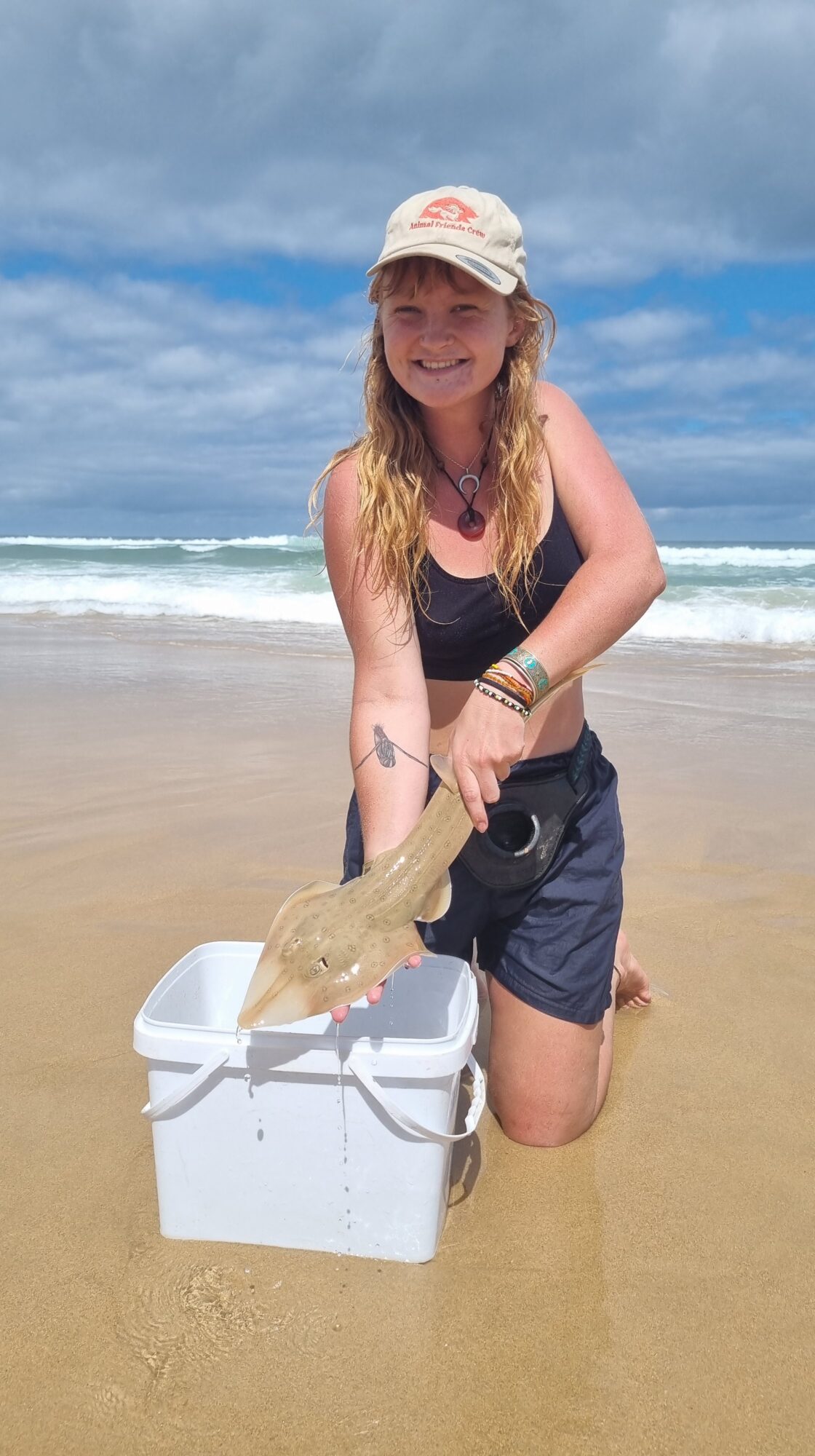From the shadows to the spotlight: Story of the lesser guitarfish
South Africa is a global hotspot for shark and ray species, boasting 191 species of which 34 are endemic – only being found in South African waters. Of these is the lesser guitarfish Acroteriobatus annulatus, which has generally been overlooked as a species of research priority. We know what it east (small crustaceans, sand mussels and polychaete worms); we know where they live (sandy habitats rom the shallows up to 70 m depth); we know when they mature (approximately 3 years of age); we know when they breed (March to April) and pup (shallow inshore waters off sandy beaches). We thought we knew how old they get. Initially, they were only estimated to reach seven years of age – relatively short-lived for guitarfish species. But, two dart tagging projects (using the plastic spaghetti tags), through recaptures, found them to reach at least 15 years of ages, more than double what was initially estimated!

Close up of the snout of a lesser guitarfish showing mottled patterning unique to each individual. Photo © Taryn Murray
Despite knowing all about their basic biology, we actually still know relatively little about their movements. At least 6657 lesser guitarfish have been tagged with dart tags as part of the South African Oceanographic Research Institute’s Cooperative Fish Tagging Project, with 76 recaptures indicating high levels of residency i.e. staying pretty much in one place, moving on average not more than 42 km. However, as tends to be the norm with fish, you always seem to get that handful of individuals that buck the trend, and the lesser guitarfish isn’t any different. One individual was recorded moving more than 700 km from the site at which it was tagged! However, due to low tag retention (i.e. the tags tend to fall out relatively soon after tagging), the ORI-CFTP flagged lesser guitarfish as a ‘do not tag’ species.

Dr Taryn Murray makes a small incision in a lesser guitarfish in order to insert an acoustic transmitter. Photo © Amber Childs
So, if dart tagging isn’t an ideal method with which to study their movements, then we need to consider alternative methods. Enter acoustic telemetry. The process is simple enough – catch a guitarfish using rod and line (go fishing!), insert an acoustic tag into its body cavity via a small surgical procedure, let the individual recover, and then release, all of this taking less than 10 minutes. The acoustic tag then emits a sound signal which, should the guitarfish be in the detection range of an acoustic receiver, gets recorded by the receiver as the date and time along with the unique ID code of the tag. You then take all these little pieces of information and build a larger movement puzzle. This helps you learn more about how long an individual stays in an area, whether it leaves and comes back, whether it moves along the coastline, and how these movements change with changes in water temperature or between seasons.

The underside of a lesser guitarfish showing the small abdominal cavity into which the acoustic transmitter is inserted. Photo © Taryn Murray
In 2024, a small study, with the assistance of BSc Honours student, Mia Hattingh, was initiated aiming to learning more about the small-scale movements of this often misunderstood species. To date, 15 lesser guitarfish have been tagged along a small (30 km) stretch of coastline along South Africa’s southeast between Port Alfred and the Great Fish River. While the study is still ongoing, 12 (80%) guitarfish have been detected 28 794 times revealing high levels of residency to this small stretch of coastline. However, the lower number of detections relative to other species tagged in the same area suggests that they may be using the extreme inshore environment during certain times of the year, then shifting offshore for the rest – areas in which acoustic receivers are lacking. As data continue to be collected (with Mia continuing with her MSc degree in 2026), we’re hoping to get a better picture of the movements of this species within the next two years.

BSc Honours student, Mia Hattingh, with an acoustically tagged lesser guitarfish about to be released back in the sea. Photo © Taryn Murray
